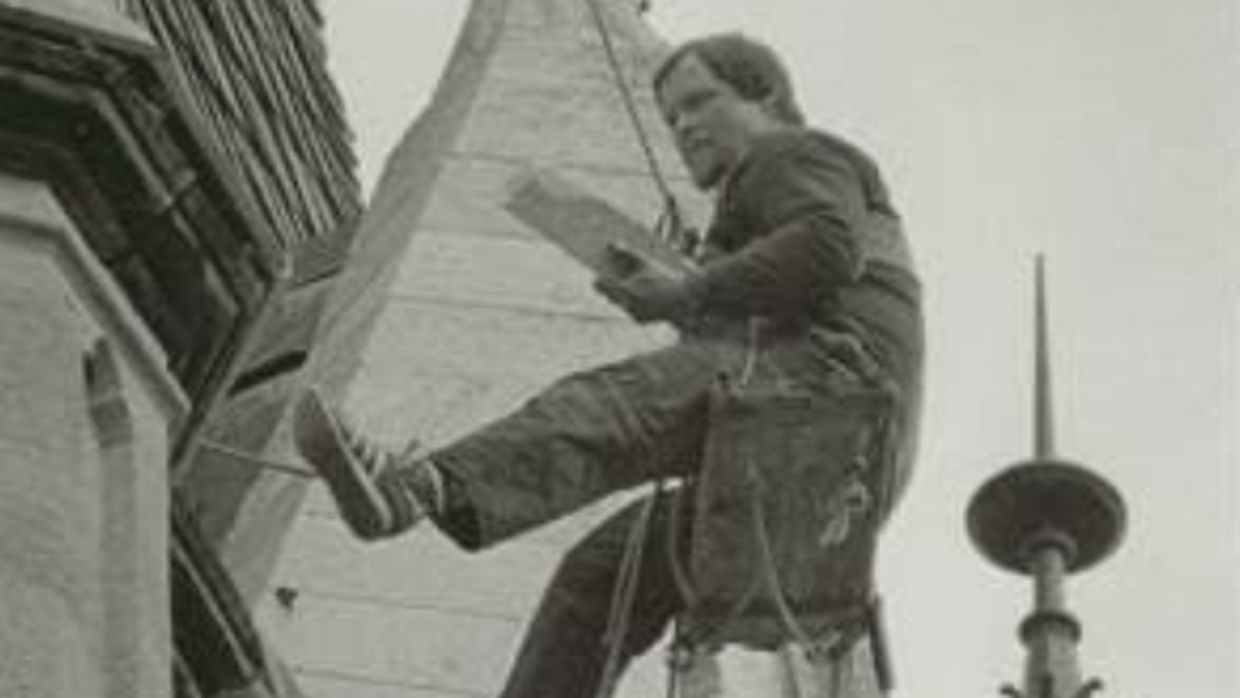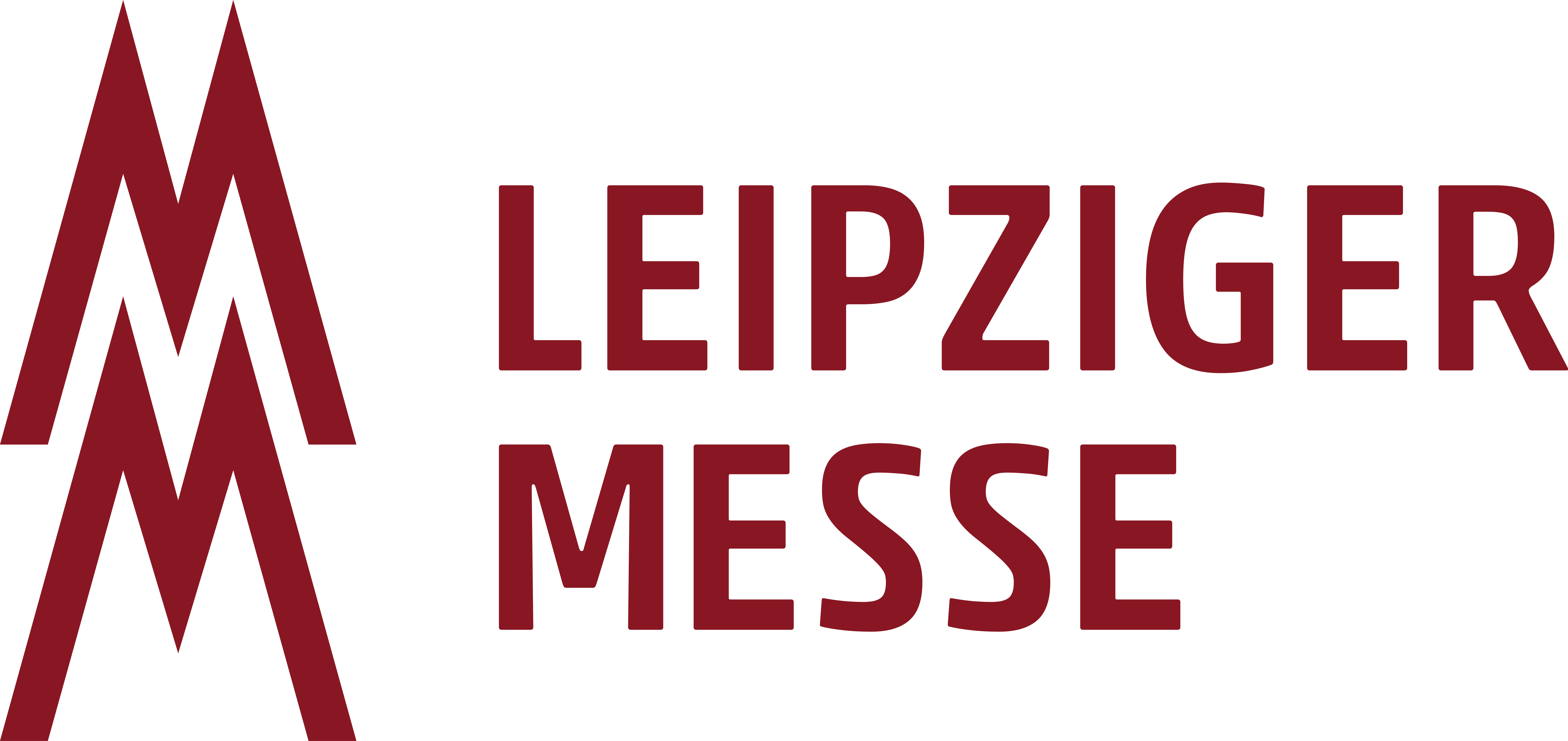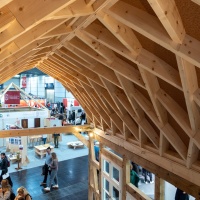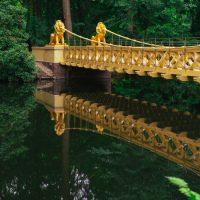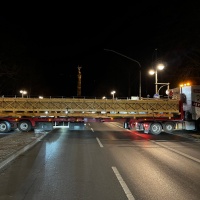News
News
From climbing group to monument specialist – 35 years of BENNERT
Holger Schmidt, head of carpentry at BENNERT GmbH, talks in an interview about iconic buildings such as the Duchess Anna Amalia Library, the reconstruction of Frankfurt's old town, and the Löwenbrücke bridge in Berlin. He talks about the company's roots in a student “climbing group,” the challenges of the coming decades, and why denkmal is the most important place for BENNERT to engage in dialogue.
Mr. Schmidt, at denkmal 2024, the BENNERT raised platform was a proverbial highlight in the exhibition hall. Probably all visitors climbed up there at least once to take in the view of the denkmal stands. What do you have planned for your next appearance at denkmal?
I can reveal this much, at least: Our stand won't be any higher this time, but we will be exhibiting on a similar area again. With long-standing partners and a similar concept to previous years, we will be presenting our expertise in historic buildings and specialist areas, from special foundations and masonry reinforcement to wood restoration and roofing, all from a single source.
How often has BENNERT actually been represented at denkmal?
That's not so easy to answer. There are a few hurdles when it comes to counting, as there were already private participations in the 1990s. But one thing is certain: the trade fair has been an integral part of our lives for many years. A special memory remains the awarding of the gold medal for innovative approaches to inventory and documentation in natural stone restoration, which can now be seen in the foyer of our company.
This year you celebrated your 35th anniversary. How did you celebrate?
Quite modestly, as we had already celebrated the “milestone years” in style. But there will be a big Christmas party this year.
Which construction sites do you remember particularly well?
The reconstruction of the Duchess Anna Amalia Library in Weimar from 2004 to 2007 was certainly outstanding. We were involved from the very beginning — we cleared the rubble with our cranes immediately after the night of the fire. This was followed by securing the building over the winter, installing an emergency roof, and suspending the entire Rococo Hall using truss girders. The entire supporting structure, including the interior, was suspended from these beams while the wooden beam ceiling below was renovated. It was one of the most complicated and exciting projects we have ever undertaken.
Another important project was our involvement in the reconstruction of Frankfurt's old town at the Römer. There, we were able to rebuild six houses as historical replicas. These had been severely damaged during the war, later demolished, and replaced by a reinforced concrete block that served as a technical town hall. Thanks to a citizens' initiative, the project was finally implemented in 2016. Today, the neighbourhood is an urban planning success, has been very well received, and is a magnet for visitors.
Today, BENNERT is a nationally established and respected Thuringian company with contracts throughout Germany. How did this success story begin?
Dr. Wulf Bennert was a physics lecturer at the University of Architecture and Civil Engineering in Weimar — now known as the Bauhaus University — and was also very active in sports. He founded a student sports group that specialized in renovating church towers and roofs. Since scaffolding was expensive in the GDR, alternative access techniques were sought, and the group simply abseiled down the churches – hence the name “Techno-Sport-Gruppe,” with “Techno” standing for the climbing technique.
Dr. Wulf Bennert was a physics lecturer at the University of Architecture and Civil Engineering in Weimar — now known as the Bauhaus University — and was also very active in sports. He founded a student sports group that specialized in renovating church towers and roofs. Since scaffolding was expensive in the GDR, alternative access techniques were sought, and the group simply abseiled down the churches – hence the name “Techno-Sport-Gruppe,” with “Techno” standing for the climbing technique.
After reunification, little happened at the Bauhaus University at first. Dr. Bennert started his own business in July 1990 and founded the company together with an employee. Initially, seven employees worked at BENNERT. Using a homemade car trailer and tried-and-tested climbing ropes, they continued to renovate church towers in a somewhat unconventional manner. The company grew rapidly, adding new trades such as carpenters and roofers. In 2005, BENNERT took over the stonemasons from the former VEB Denkmalpflege Erfurt, which had gone bankrupt. The renovation backlog from those years also resulted in many orders, soon extending beyond the borders of Thuringia. Today, BENNERT has 200 employees and is one of the European market leaders in monument renovation.
What challenges do you see for the next 35 years?
The biggest challenge is and remains skilled personnel. The company thrives on their experience and knowledge – and that is exactly what needs to be passed on. We are currently training 39 apprentices in various trades. Together with partners in inter-company training, we have developed concepts to get young people excited about the trade. We therefore have no difficulty in recruiting young talent, especially as our catchment area now extends nationwide.
The ever-increasing bureaucratic requirements in the construction industry are hindering our development. There is an urgent need to remove obstacles and streamline processes.
Another issue for us is, of course, digitalisation. With drone technology and 3D work planning, we have established structures that allow us to create more efficient construction processes while also ensuring comprehensive documentation.
What role does denkmal play for you?
For us, denkmal is the place where we can showcase what we do. We deliberately limit our public appearances to this trade fair. It gives us the opportunity to interact with customers, planners, and partner companies in just three days — something we wouldn't be able to do on a daily basis throughout the year.
Which current projects are of particular importance to the company today?
I would like to highlight two projects: Firstly, the historic “Zur Krone” inn in Oettingen, Bavaria, a building that was extremely challenging to restore and where our employees were able to contribute their entire range of skills across all trades. Secondly, the reconstruction of the Löwenbrücke bridge in Berlin's Tiergarten park. This bridge had to be replaced several times in the past, was destroyed during the war, was then restored, but showed signs of damage again after prolonged use. The Berlin Senate finally decided on a restoration in line with monument conservation guidelines. The bridge was prefabricated at our building yard in Klettbach, transported to Berlin by heavy goods vehicle, and installed on site with millimeter precision in the spring of this year.
